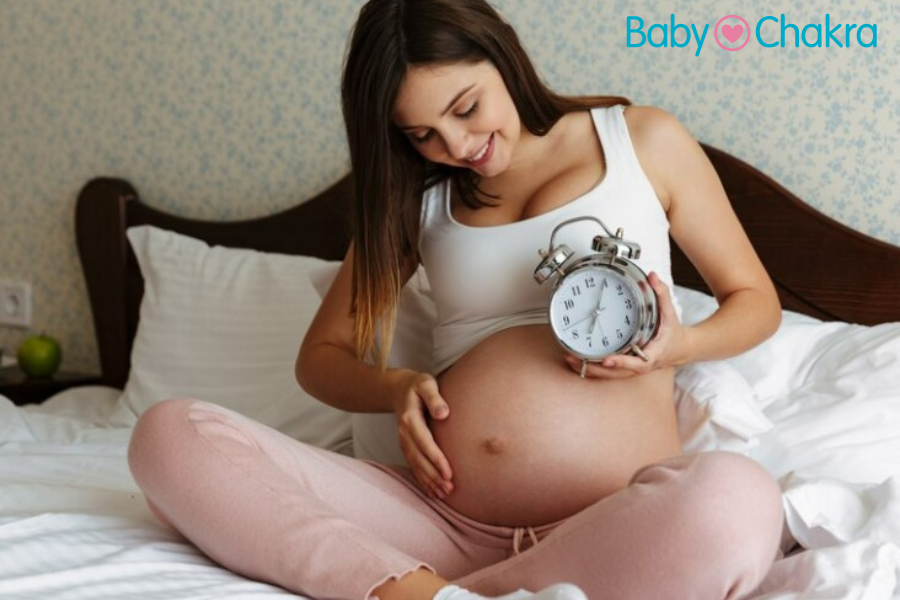
Baby Dropping: When Does It Happen And What You Must Know
25 May 2023 | 5 min Read
Sudeshna Chakravarti
Author | 799 Articles
Most expecting women are curious about this one question, “When does your baby drop?” Well, your baby usually drops into your pelvis in the final weeks of your pregnancy, or they may even drop a few hours before their birth. Overall, your baby dropping is an indication that your body is ready for labour and your baby is taking their final position in the uterus, before passing through the birthing canal.
While predicting the actual time of your baby’s birth may be difficult, this phenomenon is a good sign for mums to start preparing for childbirth. Read on, as we tell you more about the signs of your baby dropping, how your baby changes their position as labour progresses, and what you can do to ensure that they are in the right birthing position.
Baby Dropping: When Exactly Does This Happen?

Your baby dropping indicates that your body is preparing for labour and childbirth / Image credit: Freepik
Baby dropping, also known as lightening, happens in the 34-36th week of pregnancy. But in some cases, your baby may only get into the birthing position a few hours before the onset of labour. However, this phenomenon is more likely to occur in your first pregnancy than your subsequent ones.
Hence, if you feel that your baby has dropped, check with your doctor immediately about their position.
Signs Of Your Baby Dropping During Pregnancy
As your baby drops down, you may notice the following changes in your body.
- Changes in your abdomen: You may notice that your belly is hanging lower than it did before.
- Gets easier to breathe: As your baby drops, the pressure on your diaphragm eases, making it easier for you to take deep breaths.
- Increased pressure on your pelvis: You may feel an increase in pain and pressure in your pelvis as your baby drops lower.
- Increase in vaginal discharge: As your baby drops, the pressure on your cervix for dilation increases and you lose your mucus plug, which is a thick, jelly-like discharge.
- Frequent urination: As your baby’s head exerts pressure on your bladder, the urge to urinate increases.
- Lower backache: With your baby dropping, the pressure on your lower back muscles increases, thus causing pain.
- Increase in appetite: As your baby drops, the p[ressure on your stomach lessens, which further conditions like heartburn, thus increasing your appetite.
- Haemorrhoids: As your baby drops, their head applies pressure on your pelvic and rectal muscles. This can, in some cases, cause haemorrhoids.
- Braxton Hicks contractions: With your baby dropping, you may experience Braxton Hicks contractions a few weeks before your due date. But don’t worry, it is just an indication that your body preparing for childbirth.
How To Encourage Baby Dropping?

Indulging in moderate physical activities can help your baby change their position and move toward the pelvis / Image credit: Freepik
If your baby doesn’t seem to drop to your pelvis even after the 36th week of pregnancy, then here’s what you can do:
- Indulge in physical activities to help open up your cervix. But avoid engaging in strenuous exercises.
- Do not sit in a cross-legged position as it can push your baby back. Sit with your knees apart and lean forward to make your baby move down to the pelvis.
- Try doing some squats as they help open up your pelvis and strengthen your pelvic floor muscles. Squats also help your baby move closer to the pelvis.
- Use a birthing ball to help move your baby to the pelvis and also alleviate back pain.
- Lie on your left side and place cushions between your knees to encourage your baby to drop.
- If you are working in one place for a long, make sure to take frequent breaks and move around to help your baby change their birthing position.
- You may see a certified chiropractor who can help your baby move down to your pelvis faster.
If these tips fail to work for you, then do consult your doctor to understand why your baby is not moving into the pelvis.
What To Do When Your Baby Drops?
If you feel that your baby has dropped to the pelvis, then visit your doctor first. Your doctor can track your baby’s movement and let you know your tentative due date. Keep in mind that signs of your baby dripping before the 30th week of pregnancy could indicate preterm birth. In that case, seek immediate medical intervention to prevent the risk of premature delivery and other pregnancy-related complications.
Conclusion
Your baby dropping is an indication that your body is preparing for labour and delivery. To know when your baby drops, stay mindful and alert of the common symptoms, such as changes in your abdomen, vaginal discharge, backache, and other noticeable symptoms. This will help ensure smooth delivery and prepare you for your baby’s arrival.
If your baby doesn’t drop even after 36 weeks, then consult your doctor to understand the problem and follow the required measures that can help your labour progress.
Recommended Baby Care Products:
Also Read:
First period after c-section: When can you expect your first period after c-section delivery? Tap this post to know.
Vitamin B6 for morning sickness: Does vitamin B6 help alleviate your morning sickness symptoms? Tap this post to know.
Iron during pregnancy: Learn all the reasons why you need iron during pregnancy and ways to fulfill your nutritional requirement.
Cover Image Credit: Freepik.com
A


Related Topics for you
Suggestions offered by doctors on BabyChakra are of advisory nature i.e., for educational and informational purposes only. Content posted on, created for, or compiled by BabyChakra is not intended or designed to replace your doctor's independent judgment about any symptom, condition, or the appropriateness or risks of a procedure or treatment for a given person.



